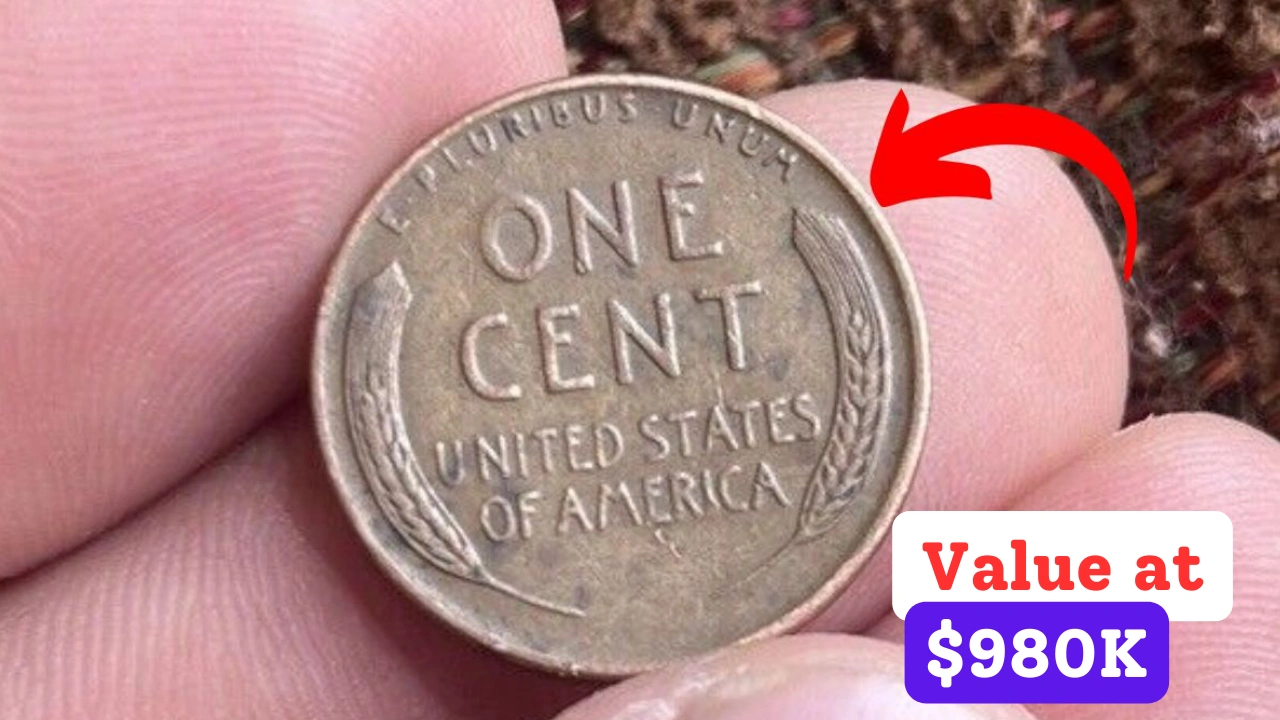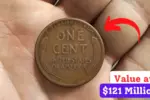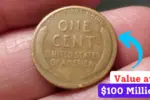The Lincoln Wheat Penny Value at $980K: Have you ever casually sifted through a handful of loose change and stumbled upon a Lincoln Wheat Penny? If so, you might be holding a small piece of American history. These classic coins, minted between 1909 and 1958, continue to intrigue collectors and numismatists alike.
What’s even more fascinating is that some of these pennies have been sold for nearly a million dollars or even more! But what makes certain Lincoln Wheat Pennies so valuable, and how can you determine if you have a rare one? Let’s delve into the fascinating world of coin collecting and uncover the secrets of these historical pennies.
The Origins of the Lincoln Wheat Penny
The story of the Lincoln Wheat Penny begins in 1909 when the U.S. Mint released it to commemorate the 100th birthday of President Abraham Lincoln. Designed by renowned engraver Victor David Brenner, this coin replaced the Indian Head cent and became the first U.S. coin to feature a real person’s portrait. On the front, you’ll find Lincoln’s profile, while the back showcases two wheat stalks hence the name “Wheat Penny.”
These pennies were widely used for decades before their design was replaced in 1959 by the Lincoln Memorial penny. Despite their discontinuation, they have remained popular among collectors due to their historical significance and hidden rarities.
What Gives the Lincoln Wheat Penny Its High Value?
Most Lincoln Wheat Pennies are worth little more than their face value, but some rare varieties can be worth hundreds of thousands or even millions of dollars. Several key factors determine whether a penny is a common coin or a collector’s dream.
1. The Mystery of Minting Errors
Some of the most valuable Lincoln Wheat Pennies exist due to minting errors. These accidental mistakes such as double strikes, off-center designs, or incorrect metal compositions make a coin extremely rare and valuable. The most famous example is the 1943 copper penny. During World War II, pennies were supposed to be made of steel to conserve copper for the war effort. However, a small number of 1943 pennies were mistakenly struck using copper planchets from the previous year. Today, these rare copper cents are among the most sought-after coins in American history.
2. Low-Mintage Pennies: The Fewer, the Pricier
Another factor that influences a penny’s value is how many were minted in a given year. Certain Lincoln Wheat Pennies had very limited production numbers, making them rarer and more desirable to collectors. One prime example is the 1909-S V.D.B. penny, named after designer Victor David Brenner’s initials. Only a small batch of these pennies was released before the initials were removed, making them highly sought-after today.
3. The Condition Factor: Mint State vs. Worn Coins
The condition of a coin plays a significant role in determining its worth. A well-preserved Lincoln Wheat Penny with minimal wear, sharp details, and no major scratches can command a much higher price than one that has been heavily circulated. Coins graded MS-65 or higher (Mint State) by professional grading services are significantly more valuable than their worn counterparts.
The $980K Lincoln Wheat Penny
While most Lincoln Wheat Pennies won’t make you an instant millionaire, one particular coin came close. A rare 1943 copper Lincoln Wheat Penny sold at auction for a staggering $980,000. The rarity of this penny, combined with its historical significance and pristine condition, made it an incredibly valuable collector’s item. Coins like these continue to rise in value as their rarity becomes even more apparent over time.
Spotting a Valuable Lincoln Wheat Penny in Your Collection
You don’t have to be a seasoned numismatist to identify a potentially valuable Lincoln Wheat Penny. Here are some simple ways to check if you have a hidden gem:
1. Inspect the Year and Mintmark
Start by checking the year on your penny. Certain years, such as 1909, 1914, 1922, and 1943, are more valuable due to rarity or historical significance. Additionally, look for mintmarks—an “S” for San Francisco, a “D” for Denver, and no mark for Philadelphia. Some mintmarks, like the 1909-S, add significant value to the coin.
2. Search for the V.D.B. Initials
If you have a 1909 penny, flip it over and check for the tiny “V.D.B.” initials at the bottom. If your coin has these initials and a small “S” mintmark under the date, it could be worth a fortune!
3. Assess the Condition of the Coin
The better the condition, the higher the value. If your Lincoln Wheat Penny looks nearly brand new, with clear details and minimal signs of wear, it might be worth getting it professionally graded. Coins that appear dull or overly worn are less valuable.
4. Look for Oddities and Errors
Keep an eye out for unique errors, such as doubled letters, missing elements, or an unusual shine. These minting quirks can significantly increase a penny’s worth.
Selling or Appraising Your Rare Penny
If you believe you have a valuable Lincoln Wheat Penny, the next step is to have it professionally appraised. Coin dealers, numismatic organizations, and professional grading services like PCGS or NGC can assess your coin’s authenticity and grade.
To sell your coin, consider:
- Auction Houses: Major numismatic auctions can attract high-end collectors willing to pay premium prices.
- Coin Dealers: Professional dealers specialize in rare coins and can offer competitive prices.
- Online Marketplaces: Websites like eBay, Heritage Auctions, and Coin World Marketplace allow collectors to buy and sell valuable coins.
Final Thoughts: Could Your Penny Be Worth a Fortune?
Although finding a nearly million-dollar penny is rare, Lincoln Wheat Pennies remain one of the most collectible coins in American history. Whether you’re a passionate numismatist or simply enjoy the thrill of searching through pocket change, it’s always worth taking a closer look at these fascinating coins. Who knows? You might be carrying a hidden treasure worth far more than just one cent!





